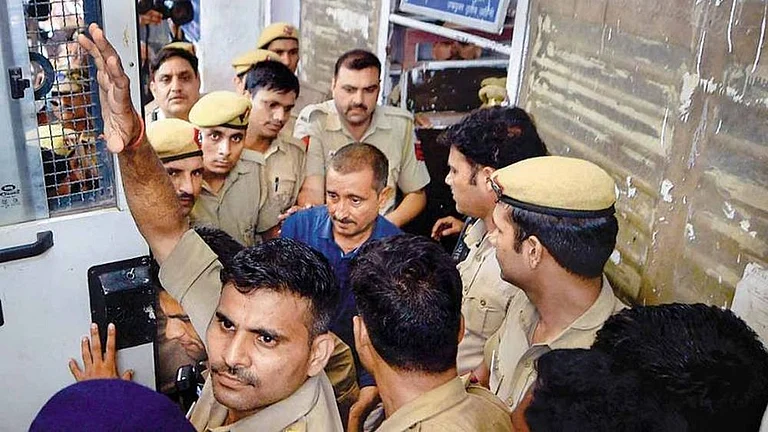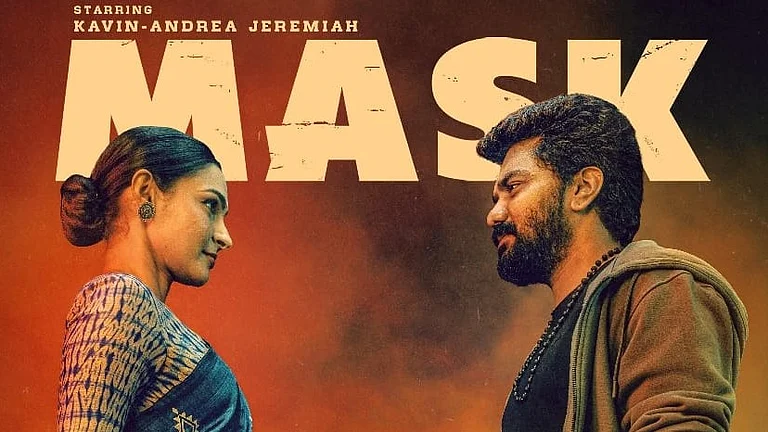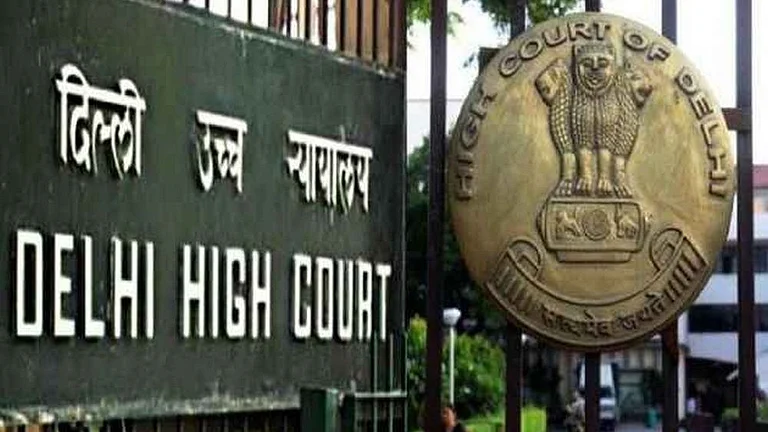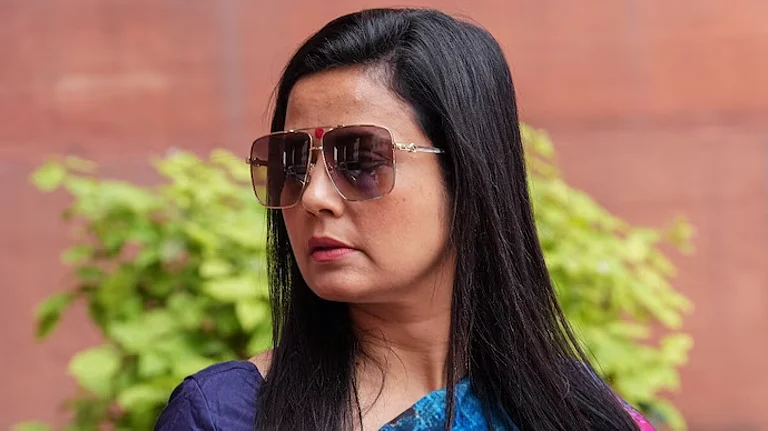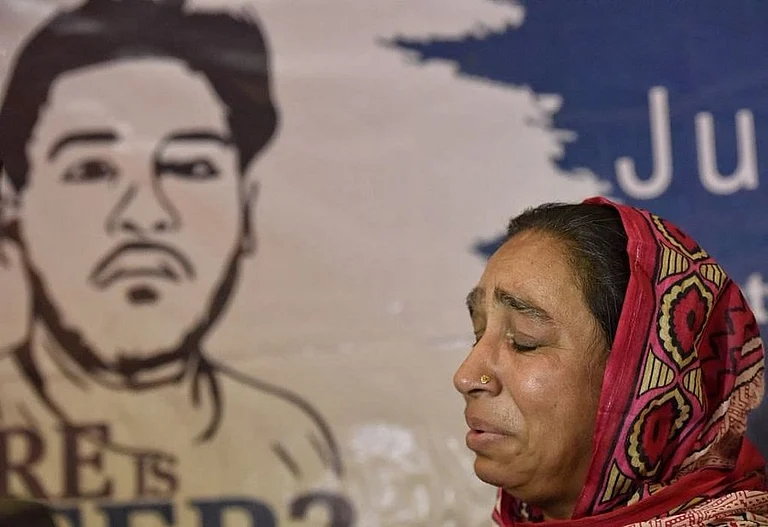On June 30, more than eight years after the “disappearance” of Jawaharlal Nehru University (JNU) student Najeeb Ahmed, a Delhi court accepted a closure report filed by the Central Bureau of Investigation (CBI), giving him a clean chit in the unsolved case. In the parlance of investigative journalism and general reportage―and in the age of true-crime OTT replacing reality―commentators would say, with a grim resigned look that the case had gone “cold”.
Over the years, there have been many reports of tacit support and negligence of hate crimes, including lynching, mob violence, and mysterious “disappearances”, under the ruling administration’s nose. One word that keeps surfacing in this case is “hope”. This descriptor has resurfaced, even in the court’s statements of acceptance of the CBI’s closure report: “As a parting note, the court said: “The Court has also earnestly hoped that Najeeb Ahmed shall be traced soon.”
Hope. How easily it flies out from the ledge of a tired tongue. Hope is the thing with feathers, after all. That bird, uncertain of survival, has left the tableaux now.
The judiciary has closed the case. “Hope” has continued to be a recurrent theme across the various discursive registers of activism, legal recourse and civil society mobilisation to do with this case.
Four years after the event, when I attended an October 2020 screening of Sunil Kumar’s piercing documentary “Ammi” (produced by Pedestrian Pictures), the sentiment was echoed: “Four years of hope… Four years of waiting in vain. Ammi still waits for her son to walk through the doors; she will never lose hope. This is one woman's fight for justice to be seen.” Ammi uses extensive footage of eyewitness accounts, official statements and reports of various institutions, including the CBI, Delhi police and the university establishment (represented by the then VC, Jagadesh Kumar, to narrativise the story of a cover-up of monumental proportions, done under the aegis of the political establishment.
In the film, we hear the voice of Fathima Nafees, Najeeb’s “Ammi”, who despairingly says (rendered here in translation from Hindi): “Our pleas have not reached those who should have been hearing our voices. We are only reaching those who already stand with us, who know that a boy called Najeeb came to JNU. I don’t understand how we can open their eyes and ears. That is why I have decided to take to the streets. I will speak out on every street corner, every platform and stage available, until they hear us. That is when their eyes will open”. Ironically, the judiciary’s statement on June 20 ensures that those eyes will remain closed. Nafees’s words refer to the student movement that arose organically among the JNU student community―including those who were with Najeeb when the incident took place. Perhaps, we might’ve been witness to a different story today, if the cries that arose from that agitation hadn’t fallen on deaf ears.
Where Is Najeeb?
Over the years, various mainstream media accounts have half-heartedly or one-sidedly attempted to piece together a narrative of the events that took place in a JNU hostel on the night of October 14, 2016. The film does the work that investigative agencies couldn’t. It sets out a rigorous “chronology” of events, using accounts by several JNU students, including Najeeb’s roommate, Qasim, and others who were present at the time. These eye witness reports speak of a concerted physical assault by a mob of 15-20 people who were allegedly associated with the Akhil Bharatiya Vishwa Parishad (ABVP). The assault that took place hours before his “disappearance” was accompanied by communal slogans and verbal threats targeting Najeeb’s Muslim identity. Apparently, Najeeb had done something to threaten the Hindu pride of a student from the ABVP, who had come canvassing for votes to his hostel room. The mob had come to deliver what it does best―violent “justice”, of the kangaroo court variety (after all it was a matter of “Dharm”).

Despite this, it took months to mobilise the university and state machinery, and get the various administrative entities to do their job. Rather than finding Najeeb, by interrogating and punishing the suspected miscreants, these agencies turned on the victim. Most reports paper over the absences and erasures, attempting to foreground the CBI’s and police’s efforts that were finally put in place a long time after the disappearance, and only after repeated pleas by Najeeb’s mother. Ammi shows several family members and people from his neighbourhood in Badaun complaining about the deliberate refusal of the police and the administration to take action. In the film, Sarfaraz, a relative, shows media channels a signed letter naming nine people who beat up Najeeb in the hostel, less than a week after the disappearance. The names of people from the mob who entered the hostel and attacked Najeeb have been in the public domain, but no FIR was registered by the administration against them. A student in the film even reports a threat made to the hostel warden asking him to leave Najeeb on the roof of the hostel, saying he will be “taken care” off, by the next morning.
Sadaf Musharraf, Najeeb’s cousin sister, recorded a meeting with the then JNU VC, Jagadesh Kumar, and other members, including the then proctor, where they are seen to be evading the demands made by her, and by Nafees. To her surprise, they were initially barred from meeting the VC who was engaged in a conversation with the youths who were allegedly a part of the same group that had assaulted Najeeb a few hours before he disappeared. In the film, witnesses of the assault refer to the attackers as “culprits”―not suspects―and the demand made by Najeeb’s mother and his sister is to question these youths and do a proper investigation, so that Najib could be found. The film contains several interviews with students who claim that these people continued to roam freely, frequently meeting the university administration, and openly asserting their Hindu identity and even taunting some of the Muslim students. Ten days after the incident, a special investigation team was convened, and the CBI was eventually roped in.
While the link between the assault and his “disappearance” is clear as daylight, the SIT and the CBI are shown to have formed a narrative that implied he had left of his own accord. The film shows testimonies that reveal gaping holes in an investigation that deliberately chooses to ignore hard facts. Geeta Thatra, who was a PhD scholar in JNU at the time, was instrumental in the efforts to deliver justice to Najeeb’s mother, and family. The students assert that the investigation focused on concocting accounts and assassinating Najeeb’s character (even bringing a fake witness, an auto driver), implicating that he was mentally ill, or that because of his “spiritual” nature (drawn from his facebook posts) he had gone away to some “dargah”. While commenting on the CBI’s “show” of taking sniffer dogs to the campus, Sadaf asks what could have possibly been done by the attackers, that the Delhi police and the CBI were taking such great pains to hide the truth. In fact, an early report by the CBI clearly mentions that the Delhi Police story was a fabrication. However, their subsequent reports only take the same fabricated narrative forward.
In one of the protest meets in JNU, shown in the film, artist and curator, Shuddhabrata Sengupta, ironically exclaims that Najeeb
has been found three times. Once, he was claimed to have been “seen” by some retired law and order official in Ghaziabad. On the second occasion, on November 6, 2016, Former Lieutenant Governor Najeeb Jung claimed that the missing person, Najeeb, was in Darbhanga, and he had become part of an Islamist terrorist cell. The third of these “finds” confuses Najeeb with a student from Kerala who was allegedly radicalised by Islamist extremist organizations, including the ISIS. This “find” was broadcasted by the media channel, Times Now, which alleged that Kanhaiya Kumar and Shehla Rashid of JNU were “harbouring” and “protecting” innocent students radicalised by the “#ISISTerrorTrap”. The statement “STOP giving ‘Islamists’ a Free Run?” flashes on their ticker throughout this report, which purports to unveil a “grave” reality.
I met Fathima Nafees, Najeeb’s Ammi at the screening in Delhi in 2020, but I have no words to convey the resilience and conviction of the extraordinary woman who kept the fight going for years, battling state negligence, and reopening old files that contained questions that no one wanted to ask. Many in the
audience who knew about the film, but saw the footage, in its entirety for the first time, were rendered speechless. The film opens with Ammi speaking about how “jab wo (Najeeb) wapis aaega (when he comes back)”, she would return to JNU, and feed love and biryani to all those who had stood with her, right there, over the years, in her struggle for justice. She goes on to speak with a quiet fury, and the vengeful despair of a mother who has lost her son, that she will show them―his enemies―and his friends, that victory resides, always, on the side of justice, truth, and the right.
After perceiving the facts, as transparently laid out in the film, and through first person narratives, one wonders how officials of the court have the gumption to utter these words: “…all conceivable aspects which could have been investigated upon, have been thoroughly covered by CBI, but no credible information could be received regarding his whereabouts.” With what surety of intent do they assert, “There are cases where the investigation conducted cannot achieve its logical conclusion, despite the best efforts of the investigating machinery.”
Still Searching…
A “disappearance” provokes a writhing helplessness, a shaky certainty. Even some answer is better than nothing. One shudders to say the word. Death? Perhaps “disappearance” is better. I can only imagine Ammi’s feelings of reckless futility, bottomless despair, of endless tear-stricken hope, despite all of it. During the Q & A session of that screening, as my mind was reeling with the futility of it all, and the bigotry, I wrote a poem to try and make sense of what was happening.
SEARCHING…
google knows what I did last summer,
the fragrance of my soap. It knows that I’m hungry
even before I do. The state has ten national agencies
peeking into my computer (for my safety, of course).
Restaurants, banks, hotels, cinema halls, cafes
are in hot pursuit, a hiccup away. They’re
discussing where I’ve been, where I’m going.
But nobody can tell me where Najeeb is.
But poetry falls short, always, of truth; of reality. It can only circle around certain kinds of experiences―even those that one has participated in, or witnessed directly.
I bring up this query only to assert that perhaps there is a place for art in testimony. Perhaps the horizons for discussion, organisation and agitation are drawn out of a flame of belief, a hard-won belief whose aesthetic form is coaxed from the reverberations of public emotional turmoil.
In October 2018, the investigating agency had filed a closure report with the Delhi High Court, effectively ending its probe in the case. Nafees and her counsel continued to insist that it was a botched investigation and that the CBI had not conducted a proper investigation. In response to the court’s statement accepting the CBI’s closure of the case on June 30, 2025 (with a provision to re-open the investigation on the receipt of any credible information on Ahmed's whereabouts) Fatima Nafees, resilient as ever, exhorted, "My wait for Najeeb will continue till my last breath.”
One is with Ammi, in solidarity, always. In anger, too.
(The author is a poet based out of Delhi and is currently pursuing a PhD in Anthropology)
(Views expressed are personal)







